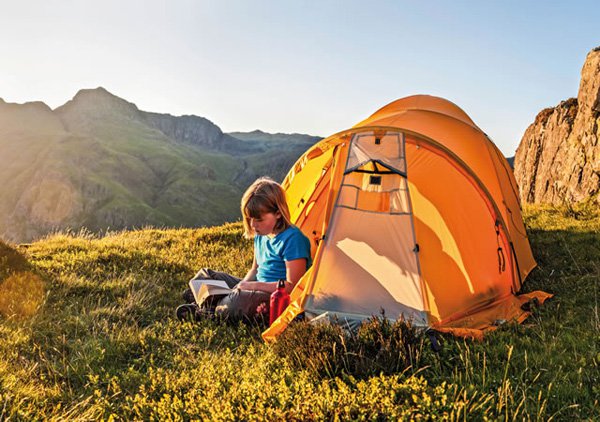Tackle Box Free Blocking zone
Question
In high school football, against a double tight, double wing, set-up, with heel to heel splits, can my defensive end, in a 9-tech, be legally cut blocked by the tight end. I am told by the officials, that since the splits are so tight, my defensive end is still in the tackle box. I simply do not agree. I finally stood my defensive ends up, and put them on the outside shoulder of the wing, and moved them one yard off of the LOS. Please give me your opinion of what you believe to be the tackle box. Thanks
Answer
Doug
Thank you for your question. I don't want to be the bearer of bad news but, please know under Federation football rules [NFHS] there is no such term as "Tackle Box" that is an NCAA term.
You use the term "cut block" which as you know is a block below the waist. Blocking below the waist under high school rules is generally illegal with one exception - it is only permitted in the free blocking zone (FBZ) while the ball is in the zone. The free-blocking zone is a rectangular area extending laterally 4 yards either side of the spot of the snap and 3 yards behind each line of scrimmage. A player is considered within the free-blocking zone when any part of his body is in the zone at the snap. If your DE is on the line of scrimmage [LOS] and within 4 yards (12 feet) of the spot of snap. You question deals with tight splits. An offensive line can have four players in tight splits all within the 12 foot areas of spot of the snap so it is possible for there to be a legal low block on your DE. If your DE is outside the Free Blocking Zone, then you are correct he cannot be blocked low.
You were correct to move the position of the DE to make him outside the FBZ so by rule he could not be blocked low; likewise moving him off the LOS also prevents him from being legally blocked low. My opinion is if the DE is on the LOS and is within 4 yards of the snap the low block is legal. The area you speak of under federation rules is considered the Free Blocking zone and there is no such term as a Tackle Box within the NFHS rules. When thinking about this situation Don't look at the positions of the players but rather the measurement in yardage . when you consider the players alignment and only consider the DE's relation to the Tackle or TE you may get hung up on the position when the rule that governs the free blocking zone addresses the players permuted to block and be blocked low with in a certain measurement of yards. Thinking of it in quantitative terms may make it easier to understand and to digest. I too think of the players positioning and use position as a reference but catch myself and look at the yards from the ball when officiating or teaching about the FBZ.
As you know Rule 9-3-2 provides:
ART. 2 . . . A player shall not block an opponent below the waist except:
a. In the free-blocking zone when the contact meets the requirements of 2-17.
b. To tackle a runner or player pretending to be a runner.
NFHS football rule 2-17 defines the FREE-BLOCKING ZONE , LEGAL BLOCKING BELOW THE WAIST,LEGALCLIPPING, ANG LEGAL BLOCKING IN THE BACK within the Free Blocking Zone:
ART. 1 . . . The free-blocking zone is a rectangular area extending laterally 4 yards either side of the spot of the snap and 3 yards behind each line of scrimmage. A player is in the free-blocking zone when any part of his body is in the zone at the snap.
ART. 2 . . . Blocking below the waist is permitted in the free-blocking zone when the following conditions are met:
a. All players involved in the blocking are on the line of scrimmage and in the zone at the snap.
b. The contact is in the zone.
ART. 3 . . . Clipping is permitted in the free-blocking zone when the following conditions aremet:
a. By offensive linemen who are on the line of scrimmage and in the zone at the snap.
b. Against defensive players who are on the line of scrimmage and in the zone at the snap.
c. The contact is in the zone.
ART. 4 . . . Blocking in the back is permitted in the free-blocking zone when the following conditions are met:
a. By offensive linemen who are on the line of scrimmage and in the zone at the snap.
b. Against defensive players who are in the zone at the snap.
c. The contact is in the zone.
ART. 5 . . . The free-blocking zone disintegrates and the exception for a player to block below the waist and/or the exception for an offensive lineman to clip and/or block in the back is not to continue after the ball has left the zone.
The following is from the 2011 Pages 14-15 of the 2011 NFHS Football Rules Case Book, Bob Colgate, Editor; regarding Rule 2-17 [blocks in the free blocking zone:
CONTACT IN THE FREE-BLOCKING ZONE
2.17.2 SITUATION A: A1 is in motion at the snap:(a)withinthefree-blocking zone, or (b) outside the free-blocking zone. In (a), A1 blocks B1 below the waist within the free-blocking zone. In (b), A1 comes into the free-blocking zone and blocks B1 above the waist and in the back. RULING: It is an illegal block in both (a) and (b). In (a), this is blocking below the waist and in (b) it is blocking in the back. The offensive blocker must be on the line of scrimmage at the snap to be able to legally block below the waist. (2-17-4; 9-3-2,5 Penalty)
2.17.2 SITUATION B: After the snap A1, an offensive lineman in the free-blocking zone at the snap, blocks B1 then disengages and blocks B2 below the waist before the ball has left the zone. Both B1 and B2 were in the zone and on the line of scrimmage at the snap. The contact takes place in the free-blocking zone. RULING: It is legal for A1 to block below the waist on his second block since the ball is still in the zone. (9-3-2)
2.17.2 SITUATION C: Back A9 is lined up behind quarterback A8 within the free-blocking zone. As A8 drops back to pass, A9 blocks B7, who was in the free- blocking zone at the snap, below the waist. RULING: Illegal block by A9. An offen- sive player must be on the line of scrimmage and in the free-blocking zone at the snap in order to block a defensive player below the waist who was also on the line of scrimmage and in the free-blocking zone at the snap. (9-3-2)
2.17.2 SITUATION D: Linebacker B7 is in the free-blocking zone, but off the line of scrimmage. B7 blocks A8 below the waist. RULING: Illegal block. In order for a block below the waist to be legal, both the blocker and the person being blocked must be on the line of scrimmage and in the free-blocking zone.
2.17.2 SITUATION E: A1 is in shotgun formation, lined up seven yards behind the line of scrimmage ready to receive the snap. Immediately after the snap to A1, (a) A2 immediately drops and blocks B1 below the waist or (b) A2 rises, and slightly retreats as if to go in traditional pass blocking protection, but then dives and blocks B1 below the waist. Both A2 and B1 were in the zone and on the line of scrimmage at the snap. The contact between A2 and B1 takes place in the free- blocking zone. RULING: It is a legal block in (a) and an illegal block below the waist in (b). It is legal for A2 to block B1 below the waist if the contact is made immediately following the snap. Any later, and the ball is considered to have left the free-blocking zone and the block is illegal.
2.17.3 SITUATION: A1 is on the line of scrimmage and in the free-blocking zone at the snap. Immediately following the snap, he drops back one step, moves three steps inside and while still in the free-blocking zone, clips B2 who was on the line of scrimmage, in the free-blocking zone at the snap and the ball had not left the free-blocking zone. RULING: Legal block.
2.17.4 SITUATION A: Offensive lineman A1 is on his scrimmage line and in the free-blocking zone at the snap. Immediately after the snap he drops back one step, then moves quickly three steps to the inside and while still in the free-block- ing zone, contacts B1 in the back. The ball has not left the free-blocking zone prior to A1抯 block. B1 was in the free-blocking zone at the snap. RULING: Legal block by A1.
2.17.4 SITUATION B: Quarterback A1 takes the snap and hands off to back A2 who takes a few steps left and then hands off to back A3 who attempts to run wide to the right. Linemen A3 and A5 pull and block opponents from behind in the back while the ball is still in the zone. The defenders and linemen were in the zone at the snap and the contact occurred in the free-blocking zone. RULING: Legal contact.
2.17.4 SITUATION C: A9 is approaching B10 in the open field and at an angle. A9 pushes B10 in the back with one hand and with the other hand on the shoul- der. RULING: This is an illegal block in the back. (9-3-5)
2.17.4 SITUATION D: A2 is on the line of scrimmage and in the free-blocking zone at the snap. A2 pulls down the line and contacts B7 (who was in the free- blocking zone at the snap) inside the shoulders, below the neck, above the waist and in the back while B7 and the ball are still in the free-blocking zone. RULING: Legal.
Here is a link to the 2011 rule book: www.nfhs.org or http://www.sfoa.us/2011%20NFHS%20Rules%20&%20Case%20Book.pdf
NFL Rules question...
NFL Touchdown Rules


